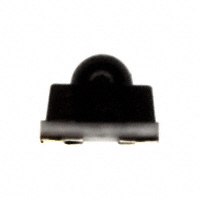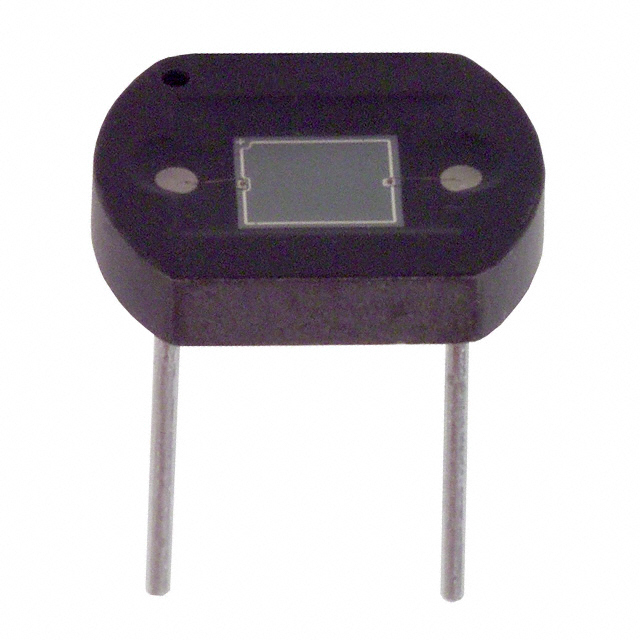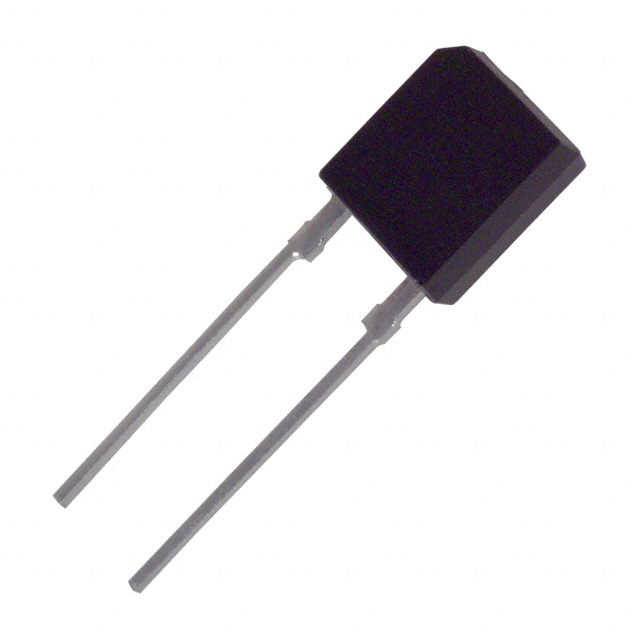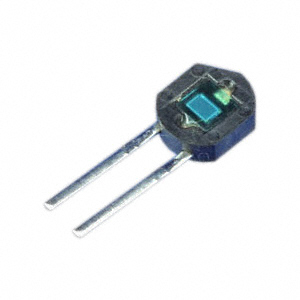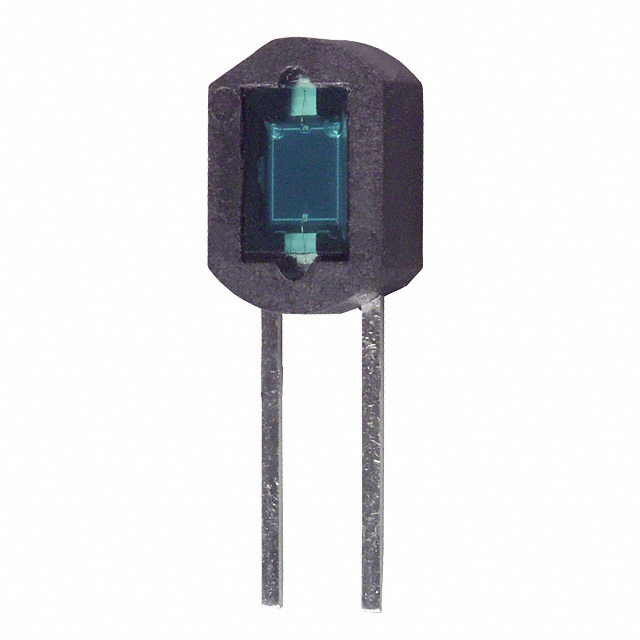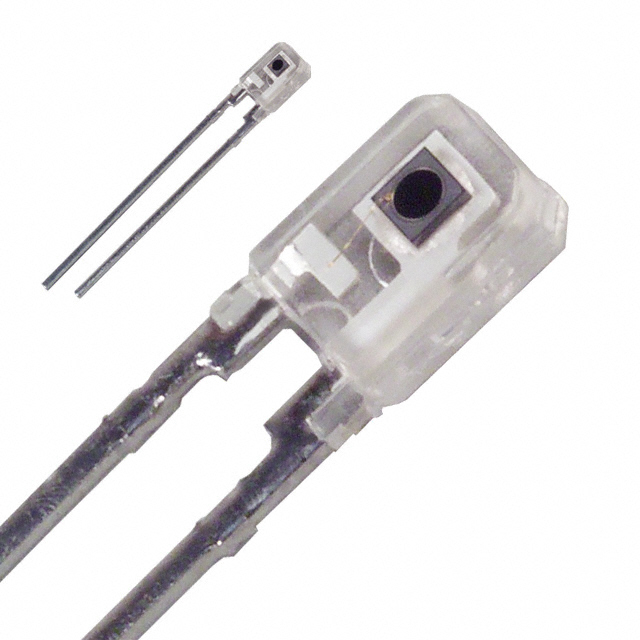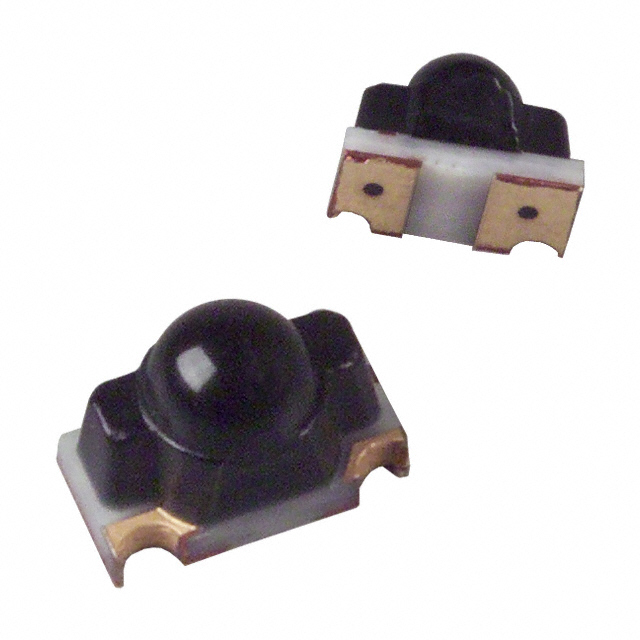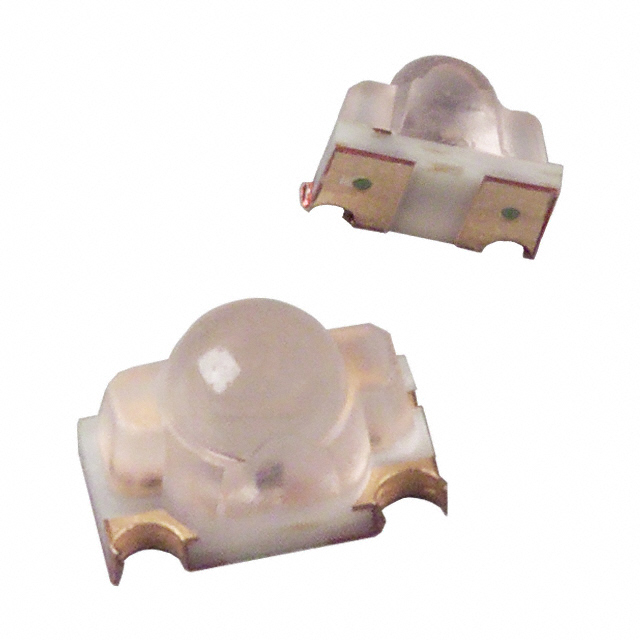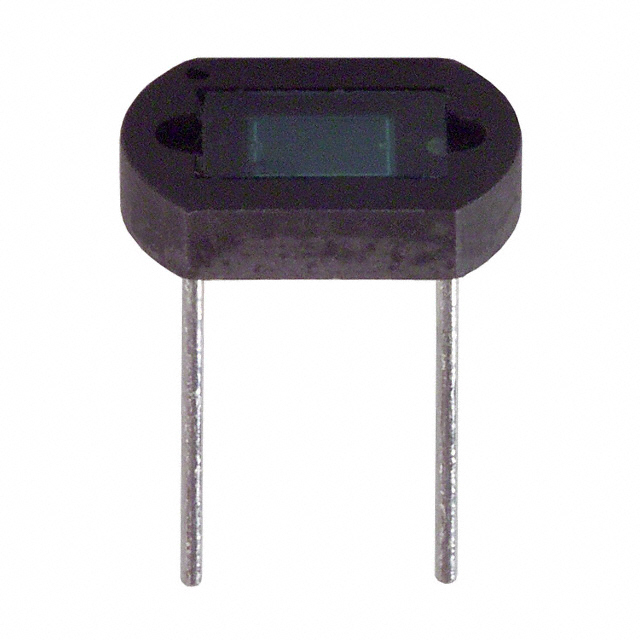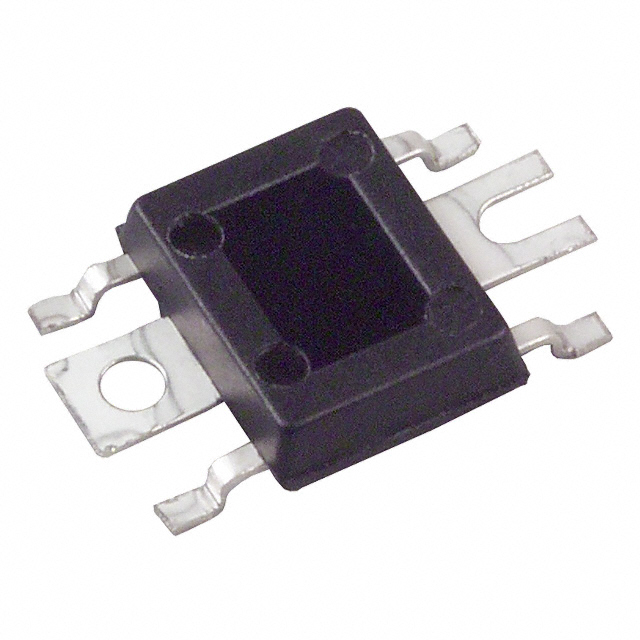Categories
- Photodiodes(20)
- 1
What Are Photodiodes?
Photodiodes are semiconductor devices that convert light into electrical current. They are used in various applications such as light detection, optical communication, and light sensing in cameras and imaging systems. Photodiodes are essential components in electronics and telecommunications for their sensitivity to light and ability to convert photons into measurable electrical signals with high efficiency.
A photodiode features optical filters, a built-in lens, and a surface area. As the surface area of the photodiode increases, its response time decreases. Some photodiodes resemble Light Emitting Diodes (LEDs), having two terminals: the shorter terminal serves as the cathode, while the longer terminal functions as the anode.

The symbol of the photodiode is similar to that of an LED but the arrows point inwards as opposed to outwards in the LED. The following image shows the symbol of a photodiode.

Working of a Photodiode
When light illuminates the PN junction of a photodiode, it ionizes covalent bonds, generating pairs of holes and electrons. This process leads to the creation of photocurrents. Electron-hole pairs are produced when photons with energy greater than 1.1 eV strike the diode. When a photon enters the diode's depletion region, it collides with an atom at high energy, causing an electron to be released from its atomic structure. This release results in the formation of free electrons and holes.
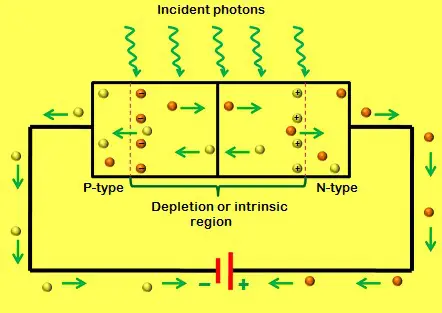
Electrons carry a negative charge, while holes have a positive charge. The depletion region contains a built-in electric field, which drives the movement of electron-hole pairs away from the junction. Consequently, holes migrate toward the anode and electrons toward the cathode, generating photocurrent.
There is a direct proportionality between photon absorption intensity and photon energy; as the energy of photons decreases, absorption increases. This entire phenomenon is referred to as the Inner Photoelectric Effect.
Photon excitation can occur through two mechanisms: Intrinsic Excitations and Extrinsic Excitations. Intrinsic excitation occurs when a photon excites an electron from the valence band to the conduction band.








